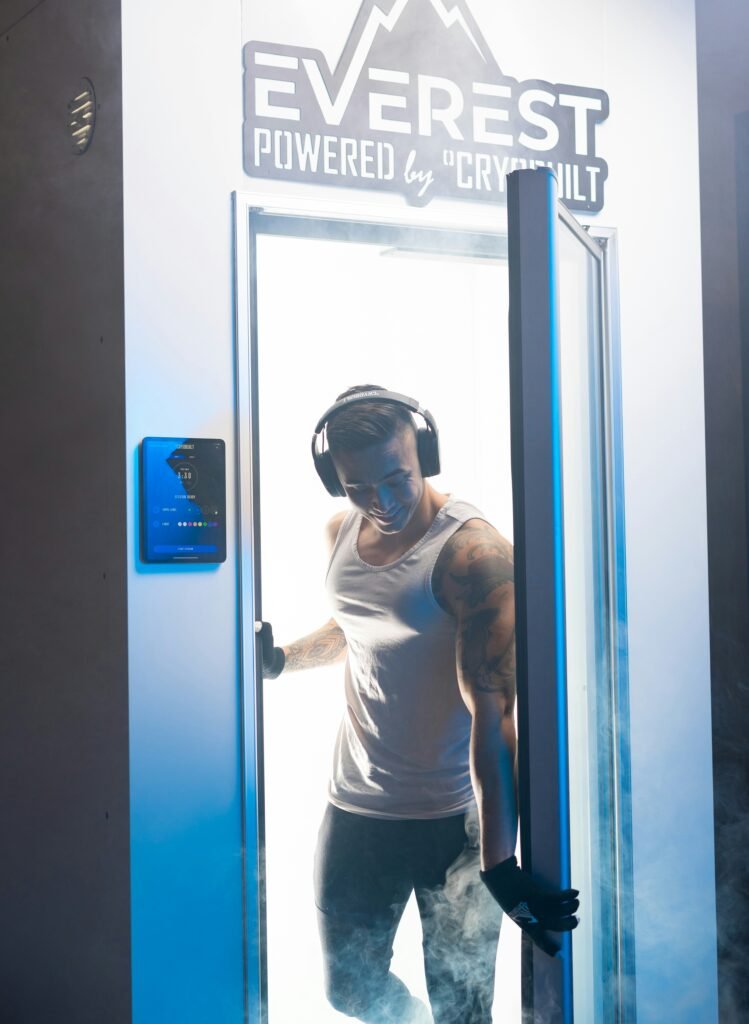Have you ever wondered how a simple plunge into cold water can have profound effects on your body, particularly your red blood cells? It’s fascinating how something so straightforward could trigger complex biological responses that impact your overall health and well-being. Let’s take a closer look at the connection between cold plunges and red blood cell activity, especially focusing on how it relates to oxygen levels in your body.

The Science Behind Cold Plunges
Cold plunges, also known as cold water immersion, have gained popularity not just among athletes but also among health enthusiasts. It’s more than just a shock to your system; there’s science at play. When you immerse yourself in cold water, your body goes through a series of physiological changes.
Understanding Your Body’s Reaction
When you enter cold water, your body’s first response is to conserve heat. The blood vessels constrict, reducing blood flow to the extremities. This is your body’s way of protecting your core temperature. But there’s more going on beneath the surface.
-
Vasoconstriction: This narrowing of blood vessels can lead to increased resistance in blood flow, meaning your heart has to work a bit harder to pump blood, particularly if you stay in cold water for an extended period.
-
Hormonal Changes: Cold exposure triggers the release of adrenaline, also known as epinephrine. This hormone can increase heart rate and blood pressure, elevating your overall alertness.
The Role of Red Blood Cells
At the core of your body’s reaction to cold is the role of red blood cells (RBCs). These cells are responsible for transporting oxygen from your lungs to the rest of your body and carrying carbon dioxide back to be exhaled.
-
Increased Production: Cold exposure has been shown to stimulate erythropoiesis, the production of red blood cells in the bone marrow. This can improve your oxygen-carrying capacity, helping you feel more invigorated.
-
Oxygen Utilization: More RBCs mean better oxygen delivery to your muscles and organs, which can enhance your performance and recovery.
Cold Water and Oxygen Levels
You may be asking yourself, how does this all connect to oxygen levels in your body? The link between cold water immersion and improved oxygen uptake is fascinating and worth exploring further.
Enhancing Oxygen Uptake
When your body is exposed to cold, it adapts in ways that can help increase your oxygen levels.
-
Improved Circulation: The initial constriction of blood vessels followed by a warm-up once you exit the cold water can lead to better circulation, promoting more efficient delivery of oxygen throughout your body.
-
Increased Hemoglobin Affinity: Cold exposure can enhance the affinity of hemoglobin (the protein in red blood cells that carries oxygen) for oxygen. This means your RBCs are more effective at grabbing and holding onto oxygen, which is essential during physical exertion.
Red Blood Cells and Athletic Performance
For athletes, understanding the relationship between cold plunges and red blood cell activity can be a game changer.
-
Recovery: Cold water immersion after intense exercise can reduce muscle soreness and inflammation. By promoting RBC production and circulation, you can enhance your recovery process, allowing you to train harder and more often.
-
Endurance: Improved oxygen delivery through increased RBC activity means you can maintain endurance levels for longer durations without fatigue setting in too quickly.

The Benefits Beyond Oxygen
While the link between cold plunges and oxygen is crucial, it’s not the only benefit you get from this practice.
Mental Well-being
Jumping into cold water isn’t just a physical challenge; it has significant psychological benefits as well.
-
Increased Alertness: The rush of adrenaline you feel can boost your mood and mental sharpness, making you feel more alive and aware after the plunge.
-
Better Stress Management: Regularly practicing cold exposure can lead to reduced stress levels, making you more resilient to everyday pressures.
Immune System Boost
Your immune system plays a critical role in keeping you healthy, and surprising as it may seem, cold plunges can help with that too.
-
Inflammatory Response: Cold water can lower inflammation in the body, decreasing your risk of chronic diseases.
-
Enhanced Immune Function: Regular exposure to cold temperatures may promote the production of certain immune cells, enhancing your body’s defense mechanisms.

How to Incorporate Cold Plunges
Are you ready to give cold plunges a try? Here are some tips on how you can incorporate them safely and effectively into your routine.
Start Slow
If you’re new to cold exposure, it might be shocking to your system at first. Here’s how to ease into it:
-
Gradual Exposure: Start with cool showers. Gradually decrease the temperature until you’re comfortable, then work your way to a cold plunge.
-
Short Durations: Initially, limit your time in cold water to one or two minutes. As your body adapts, you can slowly increase that time.
Set Goals
Knowing why you’re doing cold plunges can help you stay motivated.
-
Health: If your main goal is improved recovery and overall health, incorporate cold plunges post-exercise – about 10-15 minutes should suffice.
-
Mental Challenge: If you’re looking for a way to build mental toughness, challenge yourself to stay in the cold water for increasing durations.
Listen to Your Body
While pushing your limits can be great for development, it’s essential to be mindful of your body’s signals.
-
Know Your Limits: If you start to feel overly cold or uncomfortable, it’s okay to step out.
-
Balance is Key: Mixing cold immersion with warm baths can help create a balanced routine, allowing your body to benefit from both experiences.

Potential Risks and Precautions
While there are numerous benefits to cold plunges, it’s essential to be aware of some risks and take precautions.
Health Conditions
Certain health conditions can make cold plunges risky or even harmful.
-
Cardiovascular Issues: If you have heart problems, consult with a healthcare professional before engaging in cold water immersion.
-
Raynaud’s Disease: Those prone to circulation issues might find cold water aggravates their condition.
Hypothermia
Spending too long in cold water can lead to hypothermia, which is a medical emergency.
- Signs to Watch For: Shivering, confusion, fatigue, and a feeling of coldness are key symptoms. Take immediate action to warm up if you experience them.
Ensure Safety
Whenever you’re trying something new, perhaps consider these safety measures:
-
Buddy System: It’s always a good idea to have someone with you, particularly if you’re immersing in open water.
-
Maintain Warmth: Have towels and warm clothes ready for post-plunge, and be mindful not to jump into cold water if you’re already feeling cold.

Conclusion: Embracing Cold Plunges
As you can see, cold plunges and red blood cell activity are closely intertwined, particularly regarding oxygen levels and overall health. Regularly incorporating cold water immersion into your routine can provide a plethora of benefits that extend far beyond just a refreshing shock to your system.
Not only can you improve your physical endurance and mental well-being, but you also stand to enhance your immune system and recovery times. As you consider adding cold plunges to your lifestyle, remember to listen to your body and approach with caution. With the right mindset and practices, you can embrace the invigorating power of cold water and reap its countless rewards.

